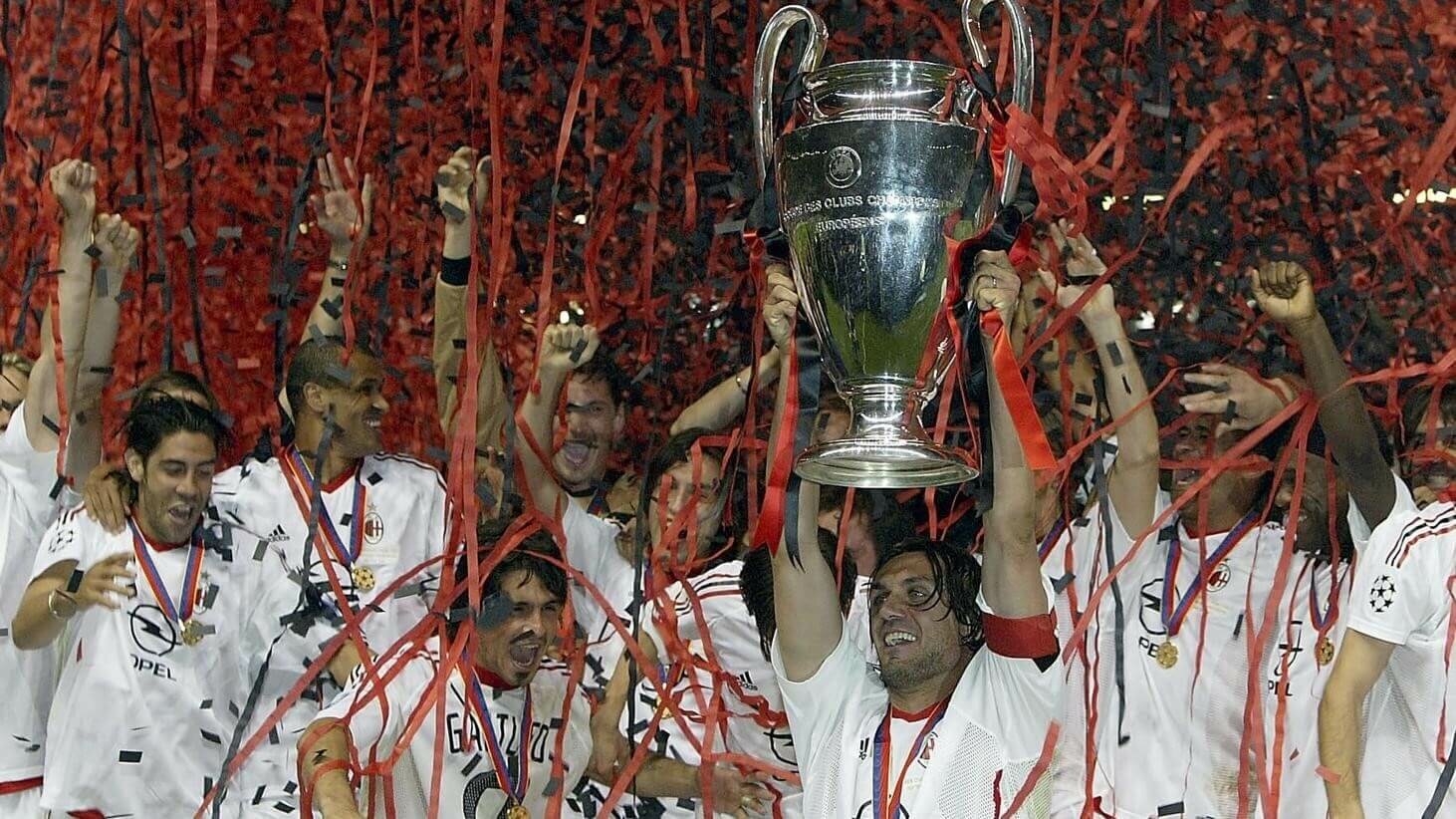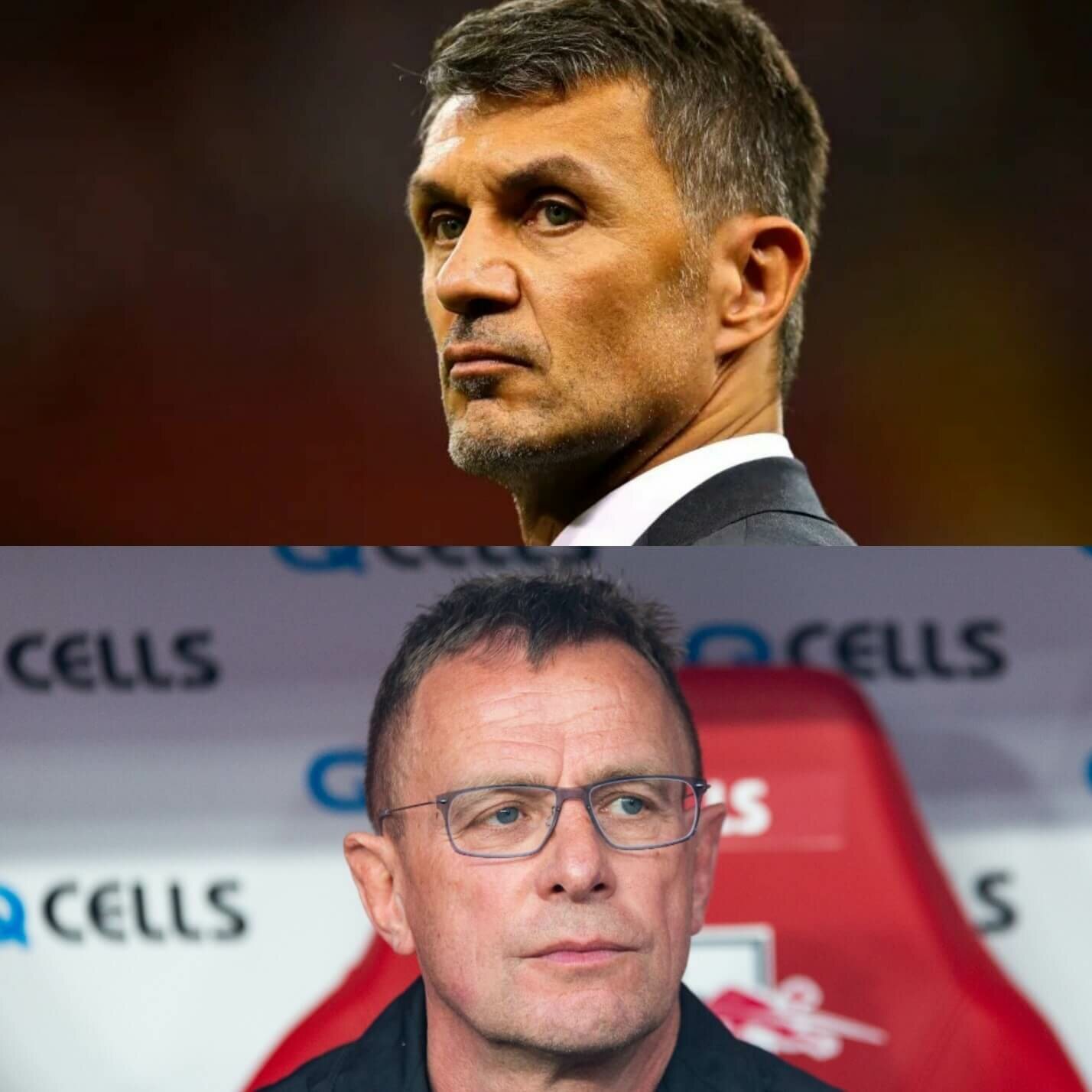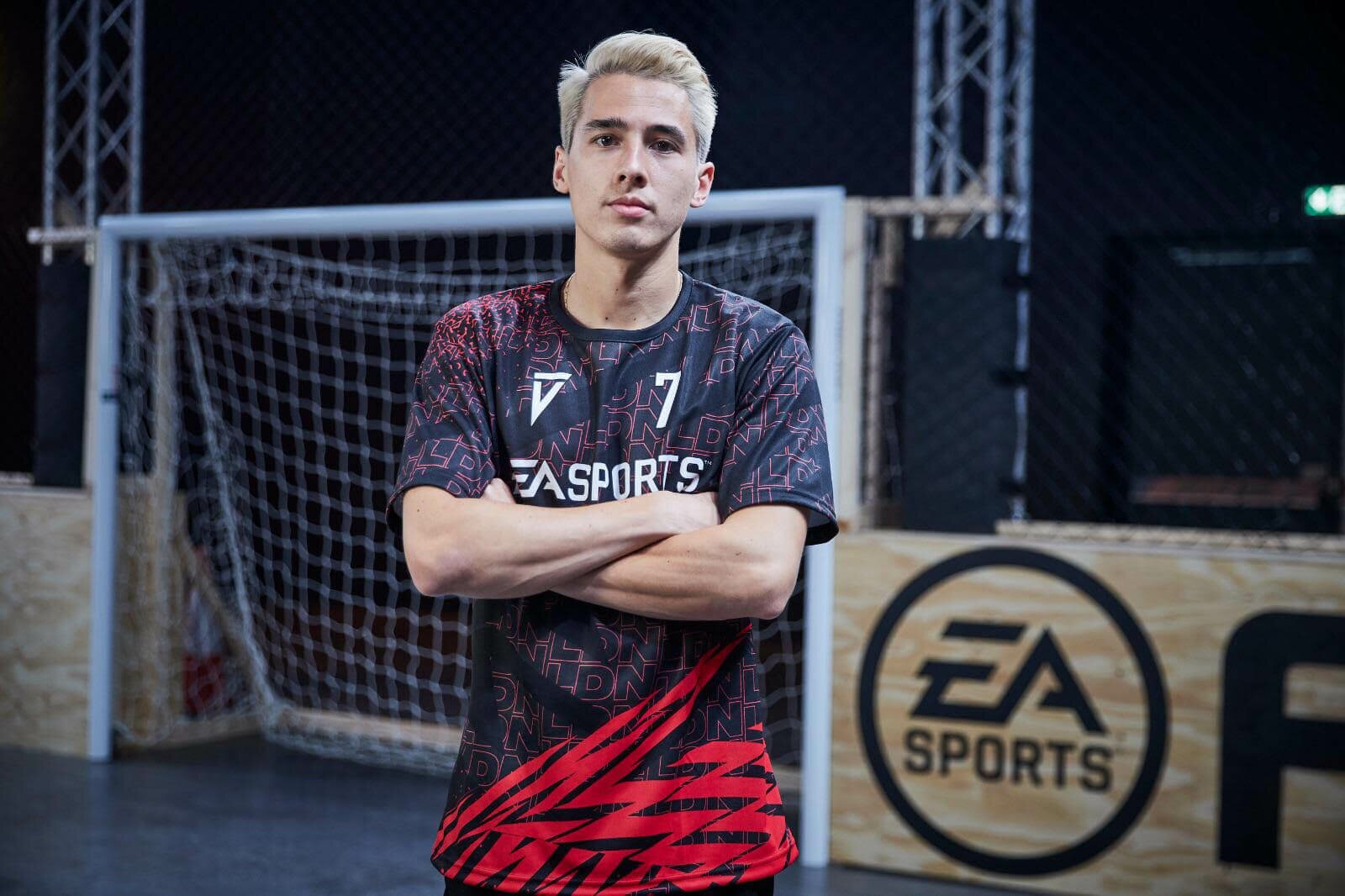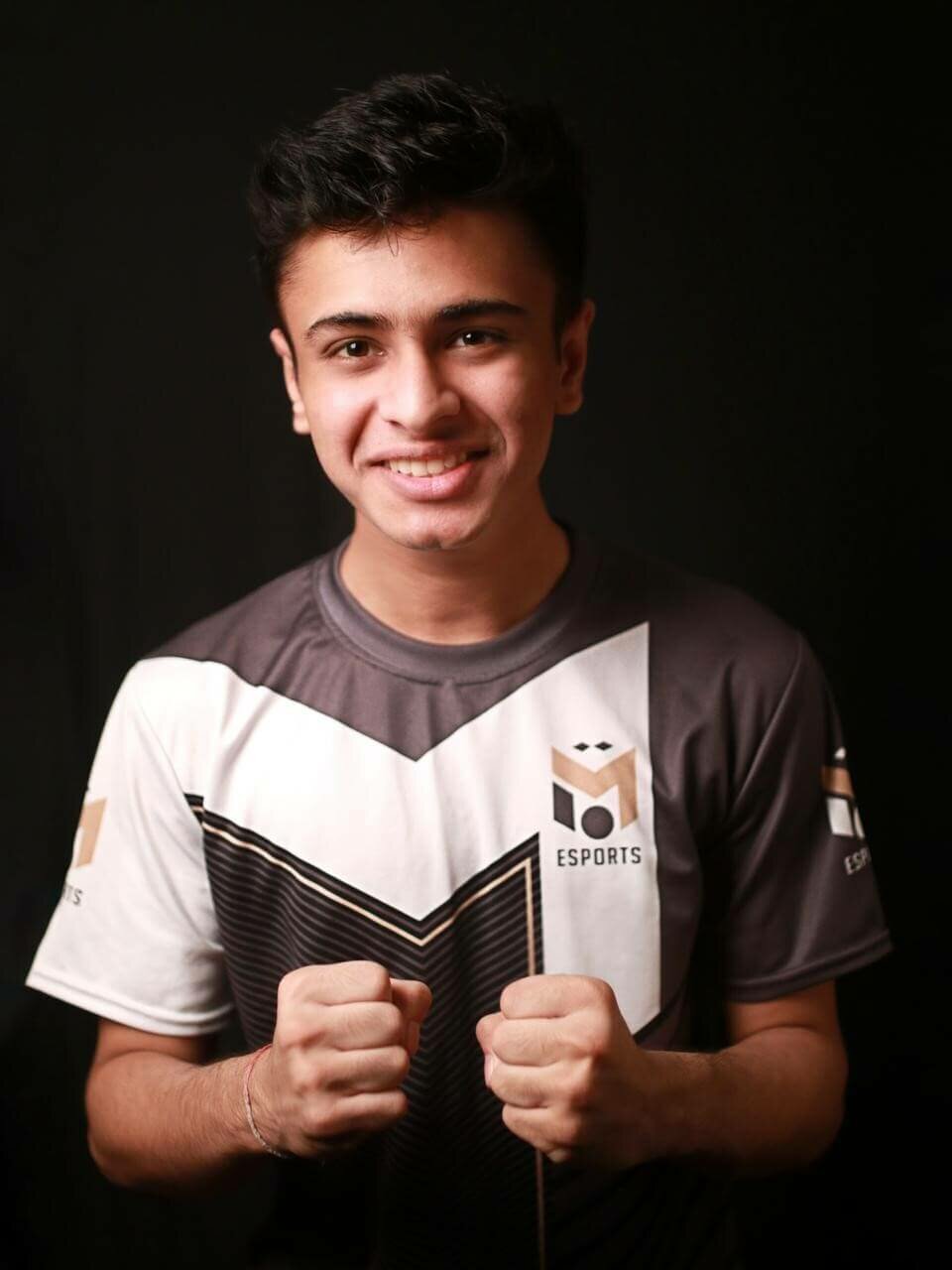ROLLING BACK THE YEARS TO MILAN’S ICONIC 2002-03 SEASON

In 2003, AC Milan were beginning to re-emerge as a European superpower. The club had previously enjoyed global success at the hands of Arrigo Sacchi from 1987 to 1991 where he revolutionized Italian football with his fluid interpretation of the 4-4-2 system, heavily influenced by catenaccio and a reliance on fast counter-attacking football. Sacchi believed in the philosophy of training young players to be versatile across the pitch rather than just becoming specialists, a coaching characteristic that stems from Dutch football. His Milan side dominated both domestically and across Europe with back-to-back Champions League trophies and league titles. Sacchi had at his disposal, a world class back four in Mauro Tassotti, Franco Baresi, Billy Costacurta and Paolo Maldini, considered by many to be one of the best defensive lines in history. His attack also boasted the Dutch trio of Marco van Basten, Ruud Gullit and Frank Rijkaard, three exceptional players that reveled in his tactical masterclass.
Sacchi was succeeded by his protégé Fabio Capello, who built on the strong foundations left by his predecessor at Milan. He won four scudetti in a row from 1991 to 1996 and was also the mastermind behind the legendary Milan 4-0 Champions League final demolition job over Johan Cruyff’s Barcelona in 1994. The Rossoneri’s triumph was an upset considering the sheer class and fluidity of the Barça team they were at war with. However, things turned awry as Milan were unable to replicate this successes of Sacchi and Capello for almost another decade, despite Alberto Zaccheroni winning the scudetto in 1999. Things did take a turn for the better in the spring of 2003.
Milan and Carlo: wounded lions that were itching for domination
Silvio Berlusconi and Adriano Galliani’s attempts to rekindle Milan’s affinity with success led them to familiar territory as they employed Carlo Ancelotti. Ancelotti had played for II Diavolo under Sacchi during the peak of the club’s powers and knew exactly what it meant to be a part of the Milanese club. As Juventus gave Carlo the marching orders the previous summer, the club snapped him up after Fatih Terim’s poor start to the season in 2001 and with this, two wounded lions in AC Milan and Carlo Ancelotti joined forces with domination on their minds.
Finding the pieces to fit the puzzle
A season in, Ancelotti had domestic and European glory on his mind. Being an ex-Milan player, he knew the standards the club was accustomed to and getting them out of this blip was nothing less than mandatory. With the help of Galliani, Ancelotti was able to bring some much-needed talent into the squad. Milan were able to pull off a deadline day special by acquiring the brilliant Alessandro Nesta from Lazio. Nesta had won the league and UEFA Cup under Sven-Göran Eriksson at Lazio and was already one of the country’s standout central defenders. Splashing a cool €30 million on the Italian, which wasn’t pocket change back then was a statement to the rest of the league that Milan meant business.
The club also acquired the services of Clarence Seedorf, Rivaldo and Jon Dahl Tomasson that summer. Galliani pulled off yet another transfer masterclass as all the three players came to the San Siro for a combined €20 million. A transfer coup that will go down in history.
A tactical revamp
Under Ancelotti, a 4-3-1-2 formation was the preferred system with offensive full-backs typifying the fearless identity of this Milan side. The Brazilian duo of Serginho and Roque Júnior threw caution to the wind as they bombed forward, providing the width in this narrow system and helping the likes of Pirlo and Rui Costa progress the ball forward. Another bold change from Ancelotti saw Paolo Maldini move from left-back to the centre of defence, partnering Alessandro Nesta. At 35 years of age, his legs were naturally tiring, and the Milan captain didn’t quite have the pace to fulfill Carlo’s specific desire from the full-backs in his new system. However, Maldini was exquisite as a centre-half, as expected and proved to be one of the greatest in his newfound role as well. Nelson Dida was also restored to the starting eleven and the Brazilian international was certainly a reliable asset in between the sticks.
The positional tweak to Andrea Pirlo’s role was one that not only transformed Milan, but Italian football as a whole. While Pirlo has defined the role of the perfect regista, the World Cup winner was previously an attacking midfielder before Carlo called the shots. He asked Pirlo to play behind a trequartista as the regista and dictated the tempo of games from deep. Alongside Clarence Seedorf and Gennaro Gattuso, Pirlo’s brain was complemented by the Dutchman’s comprehensiveness and the fellow Italian’s defensive brilliance which is often mistaken for pure aggression and nothing else.
The No.10 role was occupied by none other than the brilliant Manuel Rui Costa who was Milan’s record signing that summer. Blessed with a balance of technique, awareness and class, Rui Costa as he’s better known formed a great relationship with Pirlo immediately. This minor, yet major tactical switch boosted Milan’s ability to move the ball quicker from back to front.

Rui Costa, different class.
While Ancelotti’s tactical intelligence was second to none, he was lucky enough to have exceptional tools at his disposal and two of them were supremely dynamic forwards in Andriy Shevchenko and Filippo Inzaghi. Inzaghi was the ultimate poacher and his incredible positioning made him a nuisance for any back four to handle. Where do you start with Shevchenko? The man could do anything and everything you’d want from your No. 9 and it was no surprise to see him annihilate oppositions in Italy all season, ending up as the Capocannoniere with 24 goals to his name.
Breaking down how Milan performed in each competition they battled in takes one back down memory lane to what was truly an iconic season.
A forgettable league campaign or a blessing in disguise?
In the league, Juve were still too much to handle for Milan who scraped into the Champions League twice, finishing 4th and 3rd in Ancelotti’s first two campaigns. Marcello Lippi was bought back for a second spell to replace Ancelotti and successfully won back-to-back scudetti. Would this have fueled Ancelotti’s thirst for revenge is a question that one must save to ask the man himself, but it made for an enticing backdrop.
Milan finished 3rd in the Serie A, four points behind their arch nemesis, Inter in 2nd and 11 points behind a Juventus side who reigned supreme in Italy and ended up as deserved champions. Losing seven games that season against teams at the lower end of the table like Empoli, Modena, Torino and Bologna, it seemed as if Milan were struggling with stage fright against the lesser teams in the league and were simply unable to impose their game over teams with relatively straightforward defensive tactics. Breaking teams down that defend for their lives from the first whistle isn’t easy to say the least, but to vanquish all three points on way too many occasions was inexcusable.
At home, Milan were strong, winning 8 games in a row including a 1-0 derby win over Inter, a 2-0 win over Roma and a convincing and impressive 2-1 win over Juve. In the second half of the season is where Ancelotti’s men fell apart and this is where six of their seven losses came from. Milan thrived against the big boys and struggled against the ones you expected them to have a field day against.

Pippo Inzaghi celebrates in Pippo Inzaghi fashion after scoring the winner in the Milan derby
A rollercoaster league campaign that was filled with more downs than ups was disappointing, but it was potentially also a blessing in disguise as it must’ve been a wake-up call to a bunch of elite players to show what they’re made of in the other competitions. Seeing Lippi become a champion at Juve would also not have been a pretty sight for Carlo.
One can only speculate but boy did the sleeping Milanese giants wake up.
Revenge is a dish best served cold and in the Champions League
Milan hadn’t won the Champions League since their 4-0 battering of Cruyff’s Barcelona in 1994. A bit like the Milan of today, they had suffered a slump in Europe and were looking for redemption. The Rossoneri had to enter the Champions League through a play-off due to finishing 4th in the league, overcoming Czech Republic’s Slovan Liberec over two legs. During the group stages, Milan were drawn against French side Lens, the mighty Bayern Munich and Spain’s Deportivo de La Coruña. Ancelotti’s side topped their group on goal difference with Deportivo and ascended into the next group stage. They won all 4 of their first games, including two wins over Bayern Munich. Despite ticking all the boxes, they were faced with a monstrous challenge in the second group-stage as they were drawn alongside European heavyweights, Real Madrid amongst other in the same group. However, Milan went on to top their group, beating Madrid by one point and progressing to the quarter-finals against a stacked Ajax side.
So far, the Milanese outfit had stepped up In the competition and despite a solitary 3-1 loss to Madrid after beating them 1-0 in their match-up against them, they were taking all the right steps to reach the ultimate goal.
The next round is where they really struggled and after digging deep and putting it all on the line, Milan pulled off a last-gasp victory over Ajax, thanks to a 91st minute goal scored by their new signing, Jon Dahl Tomasson after Ajax fought back from Inzaghi’s opener with Jari Litmanen and Shevchenko’s second with Steven Pienaar.

The unlikely hero, Jon Dahl Tomasson popped up with the winner
The drive shown by the players under Ancelotti to progress was evident. Some may argue it was a matter of personal pride, but there aren’t too many better man-managers in the game than Carlo Ancelotti. His players waxing lyrical about these very skills will answer any doubts.
The Champions League was now down to the last four teams. Serie A was represented by Juve, Milan and Inter whilst Real Madrid represented the La Liga. With the Italian contingent clearly dominating, Milan were faced with the prospect of squaring up against two of their eternal derby rivals, but the footballing gods knew the stage was set for Derby della Madonnina.
Milan drew the first game against their city rivals in a tense, scoreless encounter which gave them an advantage with the away goal rule in place. All Milan had to do was score a goal in the away fixture which would put huge pressure on the Nerazzurri.
Shevchenko struck in the 46th minute, bringing all of Inter’s fears to the fore and that too, just before half-time to make things worse. Maldini started the attack, moving the ball quickly to Seedorf who used his quick feet to move around the outside of the box before passing the ball through a corridor into the penalty area for Shevchenko to loop the ball over the onrushing Francesco Toldo; an exquisite finish to a gorgeous attacking move. Despite Obafemi Martin’s equalizer in the 84th minute, Milan were able to reach the Champions League final as the away goal rule proved extremely handy, to say the least.
The battle between Juve and Milan was more than just a derby- pride was on the line for Ancelotti, who despite coming off as a measured and laid-back gentleman would want to avenge his unfair sacking on a stage as grand as any. Papers were selling like hot cakes as everyone wanted to read every bit of the build-up to what looked like an inevitable classic.
The Champions League final played between the two sides was similar to a chess game; a game in which both teams tried to out ‘defend’ each other and one where the stakes were so high that both teams were too scared to lose more than anything. Milan looked like they had drawn first blood until their first goal was ruled offside. Shevchenko was the scorer, however Rui Costa was adjudged to be blocking Buffon’s eye line. Their ascendancy didn’t stop there as Pirlo also came close, hitting the bar in the first-half from an audacious range. Gigi Buffon also pulled off a miraculous save on an Inzaghi’s header in the 17th minute and had saved his best for the final, especially in the first 45.
In the 2nd half, both teams began to sit back. However, Antonio Conte hit the post after coming on as a substitute. The game stayed at 0-0 and the tensions were rising. Anyone watching with heart problems would not have been advised to tune in.
Extra time loomed and both teams were starting to struggle physically with defensive injuries to Roque Júnior and Paolo Montero from both sides. The game eventually reached the penalties and it was poetic justice. The man who had stormed the Serie A despite Milan having a mediocre campaign, Andriy Shevchenko stepped up to the plate and scored the last and winning penalty. Milan were European champions once more, and what made it sweeter is that they beat both their arch-rivals to it.

Ancelotti not only changed Milan’s philosophy of football but managed to change their fortunes around in record time. It was the stuff of dreams and remains unforgettable to this day.
The Coppa Italia crown capped off an iconic season
AC Milan sliced through the Coppa Italia rounds like a knife through butter. Their strength-in-depth was a major contributing factor in the Coppa Italia as many of the teams understudies were given the opportunity to stretch their legs in these games. Milan beat Ancona, Perugia and Chievo Verona on their way to the final. Each game was convincingly won by margins of 2 goals or more over two legs. Dahl Tommason was Milan’s top scorer in the competition which shows how Ancelotti adopted a successful rotation plan.
In the final, Milan faced a Francesco Totti-inspired AS Roma. At the time, the Coppa Italia finals were played over two legs. Milan were ready for the challenge and it showed as they decimated Roma at the Stadio Olimpico 4-1, courtesy of goals from Shevchenko, Ambrosini and a rare Serginho brace. Milan dominated this game and embarrassed their opponents in their own backyard. Typically, in the second leg Milan made it hard for themselves by allowing Roma to go two goals ahead, thanks to Totti’s brace all before the 64th minute. Ancelotti made some much-needed changes and bought on quality from the bench to stop a humiliation from taking place at the San Siro. Rivaldo scored in the 65th minute just after Totti’s second goal and Inzaghi secured the trophy in the 91st minute.

Milan had two trophies to bring back to the San Siro to boast of in front of their fans. Ancelotti had restored Milan back into a title contending and European powerhouse. To several Milanistas, normality was restored.
What makes this team legendary?
Trophies wise, the answer is obvious. But the reason this team is legendary and deserves to be ranked highly among AC Milan’s very best is because Carlo Ancelotti was able to replicate Arrigo Sacchi’s philosophy a decade later but adapt it to suit his and the team’s individual characteristics. Where Sacchi relied heavily on defence and individual brilliance in attack, Ancelotti turned functional players into superstars. Particularly his development of the regista and trequartista roles were integral and proved to be the catalyst for their success.
Tactically, stylistically and as a unit, the 2002-03 Milan side bossed everything.
Read More
BREAKING DOWN THE MALDINI-RANGNICK WAR OF WORDS
MAX LOMBARDIA \
ESSENTIALS
TALKING YOUTUBE, ARSENAL, MEETING MESSI AND MORE: IN CONVERSATION WITH TIMBSY
SRINIVAS SADHANAND \
INTERVIEWS
AN EXCLUSIVE INTERVIEW WITH SIDDH CHANDARANA- THE INDIAN ACE ON MESUT ÖZIL’S ESPORTS TEAM
KABIR ALI \
INTERVIEWS



